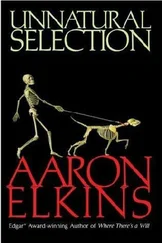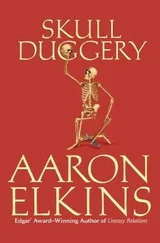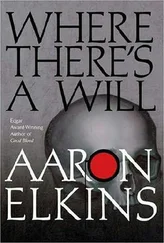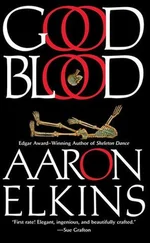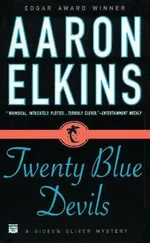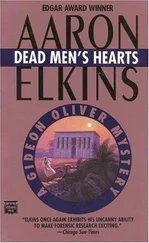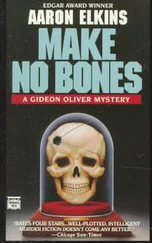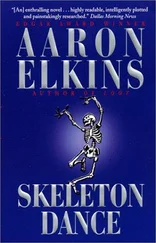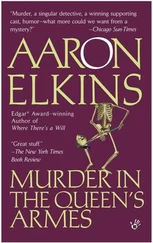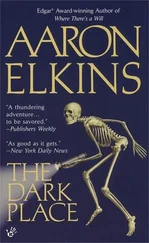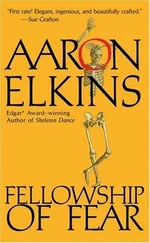“Not much, my boy. I didn’t want to disturb the scene before your people were able to have a look. I’ll tell you more after I get the remains to the mortuary, of course, but for now . . .” He stood up and turned so that he faced the cliff wall that rose behind them at about a sixty-degree angle. “From the looks of it, both of them fell from up there.”
“That’s what the caller thought,” Rocco said. “Me too. That makes three of us.”
“Four,” said Martignetti, peering upward. “That would be, what, sixty meters?”
Bosco nodded, sucking on the licorice stick. “Mm, sixty or seventy.”
“The woman must’ve come down first,” Rocco mused. “Since she was right up against the rock and the man was up against her.”
“My gracious, nothing much gets by you people does it?”
Rocco was craning his neck toward the top. “What’s up there? Do you know?”
“No roads, if that’s what you mean. I picked up a topographical map at the visitor center in Poppi. It indicates that there’s a hiking trail along the rim. The nearest structure would appear to be the Cubbiddu cabin about half a kilometer away.”
“Any ideas about cause of death?” Rocco asked. “Do we have a homicide here?”
Slowly, sadly, Bosco shook his head. “Ah, Rocco, you grieve me. You simply cannot keep it straight, can you? You mean ‘manner of death.’ There are an infinite number of causes of death, but homicide is not among them. There are, however, five and only five possibilities as to manner of death: accident, suicide, natural, undetermined . . . and homicide.”
Rocco rolled his eyes. “Oh, excuse me, signor dottore . Can you offer us any preliminary hypotheses concerning the manner of death of the deceased?”
“Oh, it’s homicide, all right. But as it happens, I believe I can also supply you with the cause. That blown-apart skull the gentleman has? It was a bullet that did that, entering at the left temple and exploding out the right side. A similar cause for the woman. A clear-cut bullet entry wound in the skull. No exit wound visible now, but I suspect we’ll find one when we clean it up a little. We’ll learn more when we get them on the table and cut their clothes away.”
“So we’ve got ourselves a double murder here?” Martignetti said.
“That, or a murder-suicide. Or, for that matter, a double suicide.”
“I’m guessing double murder,” Rocco said. Vendetta , he was thinking.
Bosco, Buddha-like on his rock with his hands folded in front of his belly, smiled. “We shall see,” he intoned, “what we shall see. Ah, good afternoon, signor public prosecutor. How nice to see you.”
• • •
INthe event, Rocco’s guess turned out to be wrong. Eight days later, the following article appeared in the Val d’Arno’s leading newspaper:
Corriere di Arezzo, Tuesday, 30 August 2011
PUBLIC PROSECUTOR ENDS CUBBIDDU INVESTIGATION
Ending a mystery that has gripped the Val d’Arno for the last month, Deputy Public Prosecutor Giaccomo Migliorini said yesterday that his office had concluded its investigation into the deaths of Villa Antica founder Pietro Cubbiddu and his wife, Nola, whose skeletonized bodies were found in a remote part of the Casentino National Forest on 22 August.
“It has been established that Cubbiddu killed his wife and then himself,” avvocato Migliorini told assembled reporters, reading from prepared notes at the offices of the Public Prosecutor. “This tragic incident took place in September of last year. Since prosecution is obviously impossible, we do not feel that the situation warrants a continuing investigation. Thank you.”
When questioning followed, additional details came to light. The deceased had each sustained a single gunshot wound to the head. The shootings occurred on a mountainside trail. The bodies then fell some sixty meters to a rocky area below. The weapon involved was a Beretta M1935 semiautomatic pistol, using .32 ACP ammunition. This pistol, which was originally produced for the military, had been in signor Cubbiddu’s possession for many years, and was found under his remains. Signora Cubbiddu, who was also born in Sardinia, had been Cubbiddu’s second wife. They had been married for twenty-five years.
The Cubbiddu family declined to be interviewed but issued the following joint statement through their Arezzo attorney, Severo Quadrelli: “We appreciate the professionalism shown by the Carabinieri and the public prosecutor in their investigation, and find no fault with their efforts. However, we maintain the unshakable conviction that our beloved father, Pietro Cubbiddu, did not commit these horrible acts.” Cesare Baccaredda Cubbiddu, Nola’s son from her prior marriage, had no comment.
Motive for the tragedy remained in doubt.
Well, yes, but in Rocco’s opinion, not a whole lot of doubt. Interviews with the family had made it clear that Pietro suspected Nola of having an affair. For an old-school Roman Catholic Sard like Pietro, what further motive was needed? Being cuckolded would have been unendurable; the most humiliating fate imaginable. And divorce was out of the question. Thus . . .
But where was the good in pursuing it now, or even making it known? With the killer dead, what difference could it make? Where could it lead, except to more anguish for the family? It was Deputy Prosecutor Migliorini’s decision to bury these details, and for once Rocco agreed with him.
FOUR
The following week, Tuesday, September 6, 2011
THEchurch of Santa Maria Novella is one of the great treasures of Florence. Built in the fourteenth century, this immense basilica boasts tranquil Romanesque cloisters, venerable statuary, and works of art by Renaissance masters like Vasari, Giotto, and Masaccio. No travel guide to Italy fails to rave about it, and it is an obligatory stop for even the most sore-footed, art-weary tourist.
But there is one wing of the church—a monumental wing, half the complex, in fact—that tourists do not see and that guide books either ignore altogether, or sidle by with no more than a curt “Closed to visitors.” This is the aptly named Great Cloister, the most ancient and historic part of the church. For two centuries now, in one of history’s more peculiar marriages of church and state (courtesy of Napoleon Bonaparte), this tranquil quadrangle, along with the four low buildings that enclose it with their gracefully arched and frescoed porticos, has been the property of Italy’s national gendarmerie, the Arma dei Carabinieri . For the last two decades it has been their Warrant Officer and Brigadier Training School.
During this particular September, it was more or less on loan, serving as the venue for the Fourteenth International Symposium on Science and Detection, a week of seminars for mid-level law-enforcement personnel from all over the world: Indian sub-inspectors, Russian militsiya majors, Japanese NPA keishi-sei , Romanian commissars. In the vaulted, richly frescoed “Pope’s Room” a lecture was currently in progress that would have singed the ears of the fifteenth-century Pope Eugenius IV when he administered the papacy from this very space. (No doubt the lecturer would have found himself more thoroughly singed soon afterward.)
The subject was human evolution, and the lecturer was Gideon Oliver, known throughout the world of forensic science as the Skeleton Detective. But in his own mind, he was first and foremost a professor (currently the Abraham Goldstein Distinguished Professor of Anthropology at the University of Washington), and at this moment he was in his element: a full classroom, a lectern to lean on, and a captive audience.
Читать дальше

